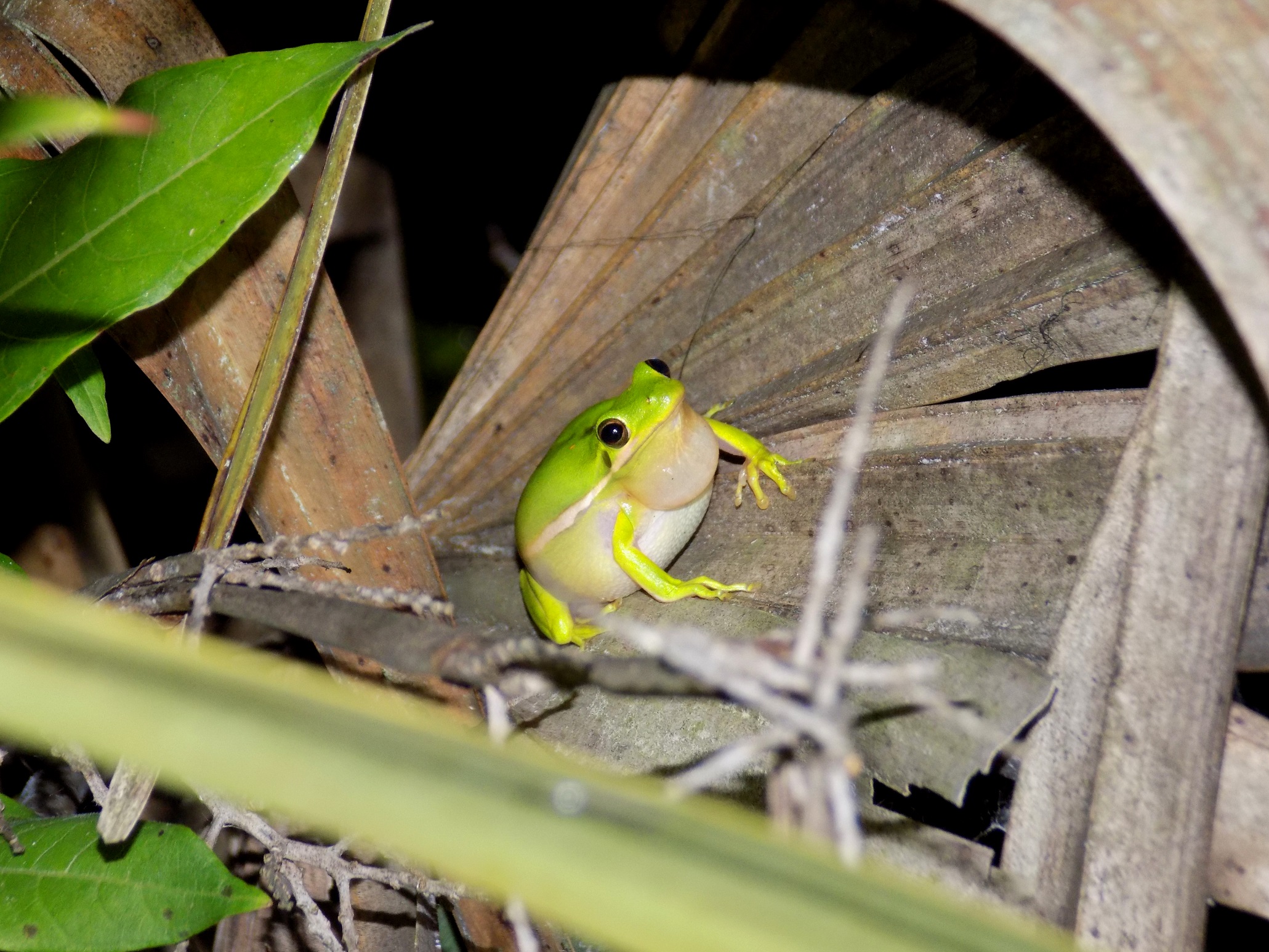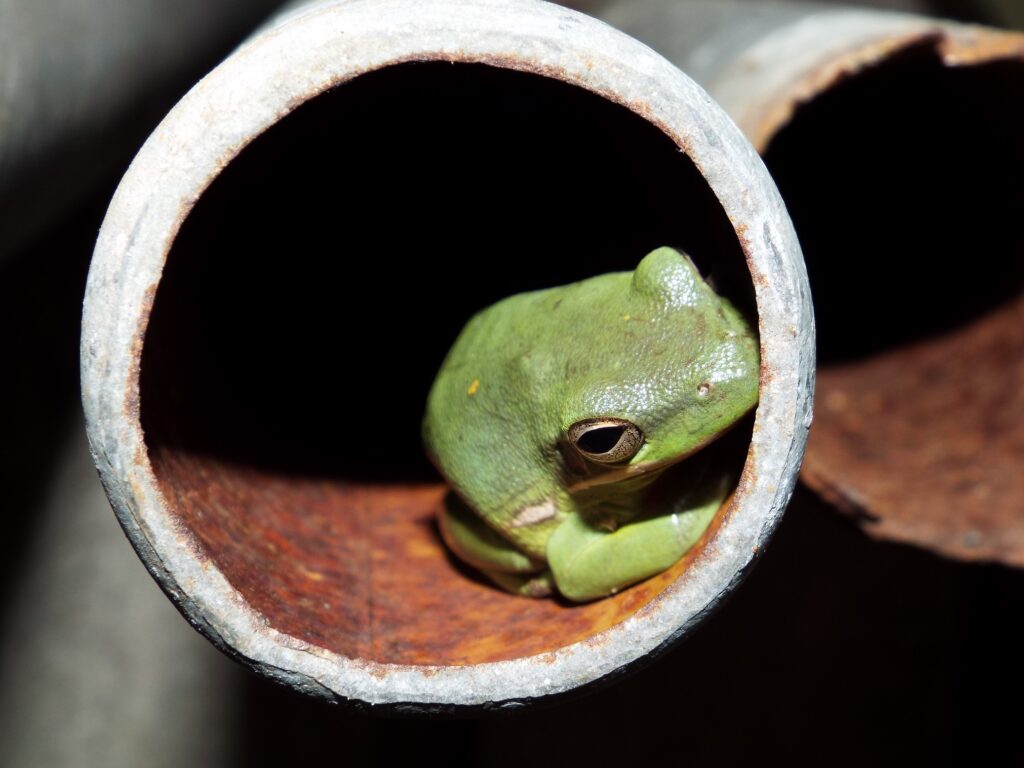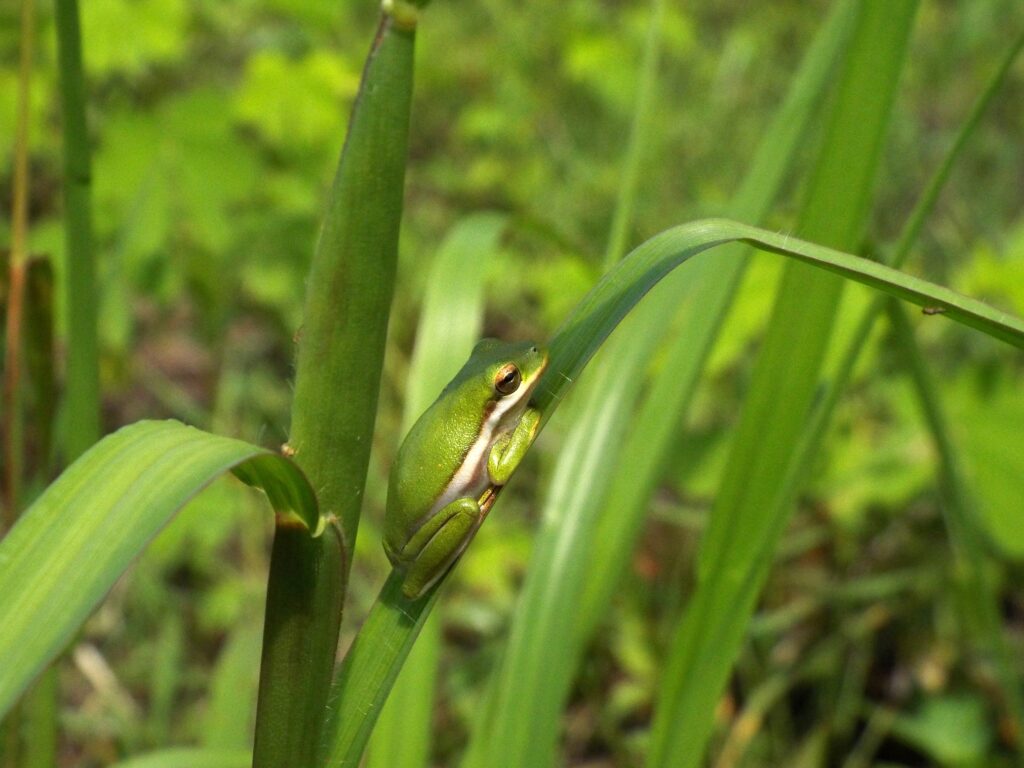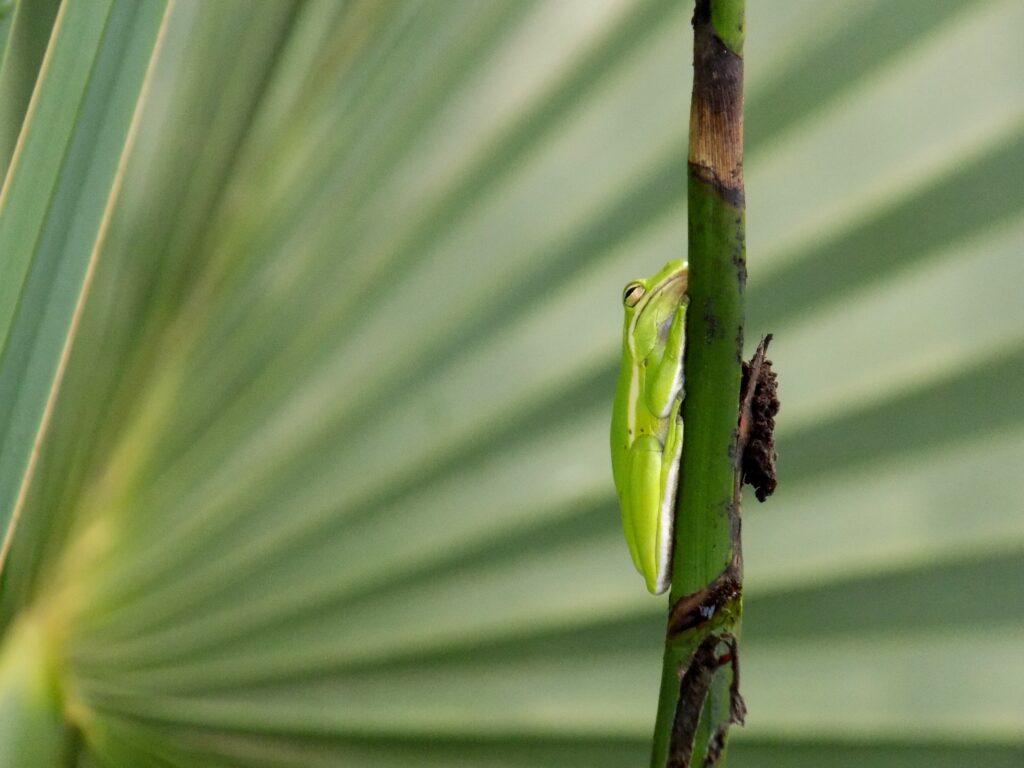





This week for Flora and Fauna Friday, we’ll be taking a look at the American Green Treefrog (Hyla cinerea).
The Green Treefrog is our most common Treefrog in the SC Lowcountry and there’s no exception on Edisto Island. They’re easy to tell apart from the other 5 species of Treefrog found in our area. Just look for that well-defined, solid white stripe down the side and smooth, solid green back that’s sometimes accented with a couple tiny yellow-orange dots. They’re most easily confused with the Squirrel Treefrog (Hyla squirella), which is less common, smaller, typically mottled on the back, and often has a poorly-defined stripe along its side.
Green Treefrogs aren’t picky about where they live. In fact, I found this immature Frog in the middle of a sandy field on one of the Edisto Island Open Land Trust’s protected properties. You’ve probably found them clinging to the windows of your home. As long as they’re someplace that’s humid and full of bugs, they’ll thrive. (I can think of no place that better fits that description than the Lowcountry!) To go into a little more detail, Green Treefrogs are amphibians. Like most amphibians, they need to stay near water to keep their skin moist and to reproduce. This means you’re most likely to find them in places like ditches, pond edges, wet depressions, freshwater marshes, and bottomland forests. If you find yourself in one of these habitats, chances are there’s a Green Treefrog somewhere within arm’s reach of you. During the day, they cling motionless, flush against the leaves of a reed, cattail, grass, or sedge. Unlike their name suggests, they’re not commonly found on trees like some of our other Treefrog species. Their flat body and solid green coloration provides great camouflage within the grasses of the wetlands they inhabit but sticks out against the dark bark of a tree.
Green Treefrogs are nocturnal. They spend the day sleeping on the side of a leaf to conserve water and energy, as well as to avoid predators. As dusk approaches, they begin to rouse. Night is when the air is the most humid and insects are the most active. A perfect hunting opportunity for an ambush predator like the Green Treefrog. Green Treefrogs follow insect activity, and when they find a plant, puddle, or something else that’s bringing in the bugs, they position themselves and wait for something to come to them. When an unsuspecting critter come into range, they lunge forward and grab it with their short, but sticky, tongue. This is why they’re a such common visitor to the porches of our homes. They’re there for the bugs! Nocturnal insects are drawn to the lights on the inside and outside of our homes. Green Treefrogs follow the insects. And, when morning rolls around, the nooks and crannies of our porches provide a nice shady retreat from the day’s heat.
Night-time is also the best time to find Green Treefrogs. Just follow your ears! Like all of our frogs and toads, male Green Treefrogs attract a mate by singing. Green Treefrogs are particularly vocal and make up the bulk of the nightly chorus you can hear in our area throughout the year. They have a simple but distinct call. It’s basically just the phrase “Beh!” repeated over and over at a somewhat high pitch, about 1-2 times a second. Green Treefrogs breed all spring, summer, and fall on the Island. If there’s a dry spell followed by a heavy summer rain, their nightly serenades can become deafening.
Green Treefrogs lay their eggs in ephemeral or shallow wetlands. Their preferred wetland breeding grounds are shallow or temporary enough to prevent fish from moving in. This allows most of the eggs to hatch and the tadpoles to grow enough to metamorphosis, without getting eaten first. Once the tadpoles become large enough, they metamorphose, and begin growing their legs and jaws while shrinking their tails. When metamorphosis is complete, a tiny Green Treefrog will emerge from the water and venture onto land, ready to grow up and start the life cycle over. Now is the time of year to keep an eye out for “baby” Treefrogs. It may not look like it, but this frog in the photo was less than an inch long and I’ve found a few fingernail sized Treefrogs in my yard this week.
So next time you’re fishing from the bank at your favorite watering hole or listening to an evening rain shower from your porch. Take a minute and try to spot a Green Treefrog in the reeds right beside you or cock your ear and pick out their beseeching sonata through the pattering of raindrops.